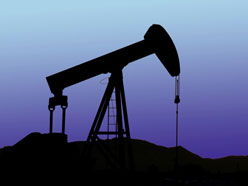
In 2010, the CEO of Chesapeake Energy told 60 Minutes there is twice as much natural gas in the U.S. as there is oil in Saudi Arabia.
It was suddenly available because of new technology called hydraulic fracturing, or fracking. The process involves injecting sand, water and chemicals deep underground to shatter shale rock deposits and extract natural gas trapped inside. But it has been accused of contaminating local water supplies and even making that water flammable.
As a result, institutional investors, including the New York State Common Retirement Fund, Green Century and the As You Sow foundation have put forth shareholder resolutions at natural gas companies asking for reporting on the environmental impact of fracking, and what plans the companies have to deal with associated waste.
Several firms immediately objected, but the SEC allowed the resolutions, saying, “The proposal focuses primarily on the environmental impacts of operations and does not seek to micromanage the company.”
As well, companies aren’t obliged to disclose the chemicals used in the fracking process, and most don’t. But a new Pennsylvania law dictates that the companies must tell physicians what substances their patients may have come in contact with.
France and the state of Vermont have banned fracking. Quebec has a moratorium on the practice, and the Parti Quebecois has hinted at a long-term ban.
Not a portfolio fit
So, is natural gas a good buy? U.S. valuations fell from an average of $7.97 per mcf in 2008 to a mere $3.95 per mcf in 2011. Chesapeake predicts the price will drop to $2.79 by the end of 2012.
Evidently, the natural gas boom has faltered economically. But fracking has always been on shaky environmental ground.
Scientists at the University of New Brunswick have expressed concerns about the process’s water consumption. Each fracking well requires enough water to fill from eight-to-24 Olympic-sized swimming pools. That water can’t be reused, and the resulting wastewater is saltier than the ocean, and full of potentially harmful chemicals.
So it has to be dealt with “by collecting the water and injecting it into deep disposal wells that are specifically designed for that purpose,” Dr. Bill Ellsworth, a scientist with the U.S. Geological Survey, told CNBC in April.
Also, some companies direct wastewater into municipal sewage treatment plants, says Dr. Robert Howarth, a research scientist in the environmental biology department at Cornell University. “A lot of this stuff ends up straight back with the sewage, which caused noticeable contaminations of Pittsburgh’s drinking water supply.” ProPublica reported in 2009 that the Monongahela River, a drinking-water source for 350,000 people near Pittsburgh, “had apparently been contaminated by chemically tainted wastewater from the state’s growing natural gas industry” in summer 2008.
Not a clean alternative
Water isn’t the only environmental concern. “Shale gas is promoted as a clean alternative to coal [and] better for global warming, but that’s not true if you look at the greenhouse gas emissions,” says Howarth. When fracking wells and storage containers leak, they are unintentionally releasing methane, a greenhouse gas 105 times more potent than carbon dioxide.
“We think shale gas wells are leaking 3.5%, possibly as high as 7%, which means that from a global warming standpoint it’s the worst fuel out there,” Howarth adds.
This methane has leaked into water supplies of homes where farmers and landowners have leased acreage to fracking companies. The resulting water is unpotable and sometimes even flammable.
With regulators paying closer attention to companies that frack, advisors should use caution when considering such equities.
Martha Porado is an editorial intern at Advisor Group.